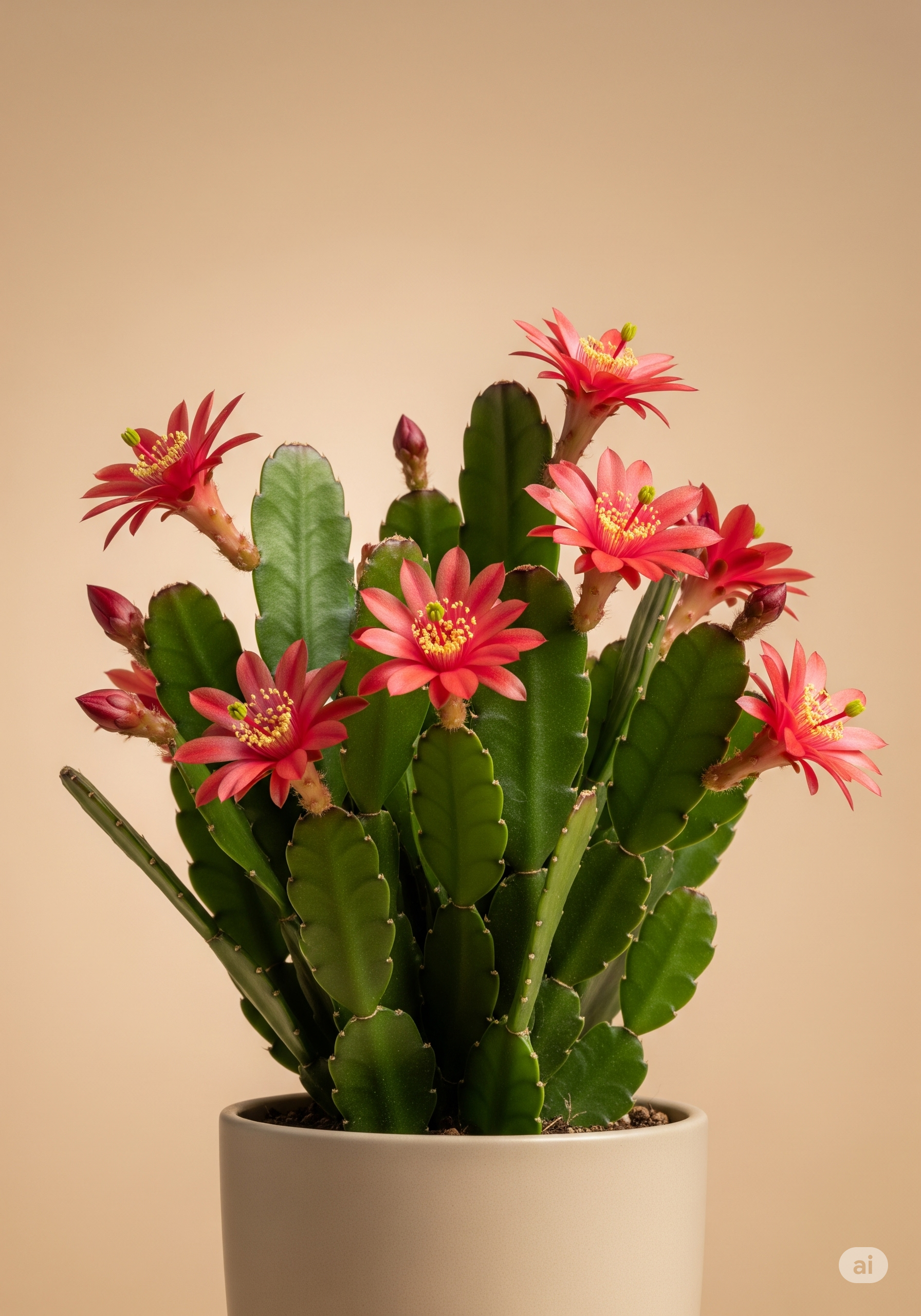Flor-de-outubro

Scientific name: Hatiora gaertneri
☘️ Toxicity: Safe for cats
☀️ Ideal light: Bright indirect light or gentle morning sun
💧 Watering: Moderate; keep soil lightly moist but not soggy
The Flor-de-outubro, also known as the Easter cactus, is a tropical epiphytic plant closely related to the Christmas cactus. It produces vibrant pink to red blooms mainly in autumn and is completely safe for cats.
Essential care
- Light: Bright indirect light; avoid harsh midday sun to prevent leaf burn.
- Water: Water when the surface of the soil begins to dry; during blooming, maintain consistent humidity.
- Soil: Light and well-draining, similar to a cactus mix (equal parts potting mix, sand, and pine bark).
- Environment: Prefers temperatures between 18–26 °C (64–79 °F) with good air circulation.
- Fertilization: Monthly during spring and summer with a balanced fertilizer (NPK 10-10-10).
- Pruning: After flowering, lightly trim to encourage branching.
Flowering
- Blooms from March to May (autumn in the Southern Hemisphere).
- To stimulate blooming, reduce watering during winter and provide cooler, darker nights.
- After flowering, resume regular care gradually.
Pests and how to handle them
- Mealybugs: Remove manually or with cotton soaked in 70% alcohol or neem oil.
- Mites: Increase humidity and ensure proper ventilation.
- Fungal issues: Avoid overwatering and ensure drainage.
Propagation
- Cuttings: Take mature segments after flowering; allow to callus for 1–2 days before planting.
- Rooting: Takes about 3 weeks in bright, indirect light.
Cat safety
- Classification: Considered non-toxic to cats according to ASPCA.
- Best practice: Avoid excessive chewing to prevent mild stomach upset.
💡 Flor-de-outubro blooms best after a short winter rest with cooler nights and less water.
Quick checklist
- ☀️ Bright indirect light
- 💧 Lightly moist soil
- 🌸 Blooms in autumn
- ✂️ Light pruning after flowering
- 🐾 Safe for cats